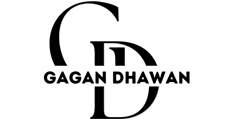Just as much as businesses need to deal with the problems and challenges in the present, they also need to be able to have a clear enough picture of what the future holds. Trends keep shifting, new demands keep cropping up and regulations keep getting modified. A competent business model always includes ways to predict or forecast the future proactively and function in accordance with those predictions in order to succeed.
What is Business Forecasting?
Business forecasting refers to the process of determining the future for the company in terms of economic volatility, market movement, consumer demand and growing competition. After doing its due diligence, a business must prepare short term-action plans, contingency plans and long-term operational strategies based on the previously determined forecasts.
Forecasting is both an art and a science since it uses qualitative as well as quantitative data to predict the future. Accurate and timely forecasting is essential for a business to optimize its manufacturing process, sales channels, marketing techniques and financial management.
Types of Forecasting
1) Historical
As a rule of thumb, companies rely on historical data to recognise how, why and when certain changes happen repeatedly. Recognising these patterns through historical data is known as predictive forecasting. However, predictive forecasting is not the absolute determinant of what the future will look like. This is why big data is crucial and sophisticated artificial intelligence(AI) systems track real time data and provide valuable insights. Thus, companies use a combination of historical and real time data to forecast the future.
2) Opinion
Apart from historical data, there are several other ways of business forecasting such as opinion-based forecasting which looks at qualitative data from interviews, questionnaires etc. It is used in the absence of historical data and even along with quantitative data.
Opinion based data is used by expert reviewers who have complex rating systems to collect and rank the opinions in order to transform them into forecasts. When a company introduces a product or service that has never existed before, there is no historical data to measure the demand and feedback from the market. This is why they use opinion forecasting as a measure of response from potential consumers and run pilot tests.
3) Prescriptive
This model combines historical data, opinion-based data, real-time data, neural networks and deep-learning to form the most accurate model of forecasting. Prescriptive forecasting helps a business to cover all the bases with accurate insights based on large data sets and real-time movements around the globe. Most businesses use this model to make informed recommendations and decisions.
Furthermore, prescriptive forecasting gives companies the ‘First Mover Advantage’ since they are able to predict potential opportunities and pounce on them after carefully weighing consumer demands, upcoming trends, financial implications and government regulations.
Stay tuned for the next article which will talk about why forecasting is crucial for a business to flourish.
Written by Gagan Dhawan



